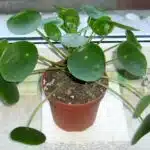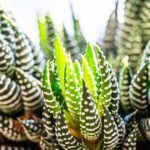Do you want to add a bit of greenery to your home or office? The Chinese money plant, or Pilea peperomioides, is the perfect solution! This stunning houseplant has been increasing in popularity due to its unique and attractive features. Not only does it look great, but it’s also easy to care for and propagate. In this article, we’ll show you how to grow Chinese money plants in your own home.
Growing Chinese money plants is relatively easy if you follow the directions properly. With minimal effort and some basic knowledge of houseplant care, you can have a thriving collection of these beautiful plants! We’ll teach you everything from proper potting soil and watering to propagating new plants from cuttings. No matter what kind of space you have available, you’ll be able to successfully grow Pilea peperomioides with ease.
By the time you’re done reading this article, you’ll have all the information needed to get started growing your own Chinese money plant! Get ready for a rewarding experience that will bring both beauty and life into your living space – let’s get started learning about how to grow Pilea peperomioides!
Where To Buy A Chinese Money Plant
The Chinese money plant is a unique and eye-catching home addition, as its vibrant green and quilted leaves bring life to any room. It’s a great choice for those looking to bring nature indoors without the hassle of maintaining a larger plant – it’s practically foolproof!
If you’re looking to get your hands on one of these delightful plants, there are a few ways to go about it. You can either buy one from an online nursery or find someone who already has one and ask if they have cuttings they could give you. If you’re lucky, you might even be able to find a friend with one who will let you take cuttings from their own plant.
Once you have your Chinese money plant in hand, the next step is planting it. With the right soil and light conditions, your new houseplant will thrive for years to come!
Planting A Chinese Money Plant
Planting a Chinese money plant is relatively easy, as long as you have the right supplies and conditions. First, you’ll need a pot with drainage holes, some well-draining soil, and a place to put your plant that has indirect light. You can then fill your pot with soil up to an inch below the rim. Place your plant in the center of the pot, making sure that the roots are completely covered by the soil. Once you’ve filled in around it with more soil, press it down slightly to make sure it’s secure.
You should water your pilea peperomioides thoroughly after planting. This will help settle the soil and provide plenty of moisture for successful growth. Water whenever the top two inches of soil feel dry; when watering, give enough so that some runs through the drainage hole at the bottom of the pot. Make sure not to overwater as this can lead to root rot or other issues.
Finally, you should mulch around your plant with moss or small stones for added insulation and moisture retention in cooler months. This will also keep weeds from competing with your pilea peperomioides for resources as it grows. With proper care and attention, your Chinese money plant will be a thriving addition to any home garden!
Light Requirements For Chinese Money Plant
Pilea peperomioides, more commonly known as the Chinese Money Plant, is an easy-to-grow houseplant that adds a touch of greenery to any room. To ensure this plant thrives, it’s important to understand its light requirements.
Pilea plants need bright indirect sunlight, but direct sunlight can damage their leaves. You can place them in an east or west-facing window for the best results. If your home doesn’t receive enough natural light, you can supplement with fluorescent lighting or LED grow lights. It’s also beneficial to rotate your Pilea every few days so all sides get equal exposure to the light and it grows evenly.
When you’re deciding where to place your Pilea peperomioides, avoid dark corners or places with fluctuating temperatures such as drafty windowsills or near air conditioning vents. With the right amount of light and consistent temperatures, your Chinese Money Plant will stay healthy and thrive for years to come.
Next up is understanding how often and how much water your Pilea needs…
Watering Requirements For Chinese Money Plant
Gardening can be an enjoyable experience, and caring for a Chinese Money Plant (Pilea peperomioides) is no exception. With its vibrant color and easy maintenance, this plant can be a great addition to any home. To ensure that your Chinese Money Plant thrives and grows, it’s important to understand its watering requirements.
When caring for a Chinese Money Plant, it’s best to water when the top layer of soil is dry. This usually occurs once every one or two weeks in the summertime and less during the colder months. The best way to water is to pour slowly until it reaches the bottom of the pot and then use a spray bottle filled with room temperature water to mist the leaves. Over-watering can be harmful to your plant, so make sure only to water when needed.
It’s also important not to allow excess water or fertilizer salts to build up in your Chinese Money Plant’s pot as this could damage roots or cause root rot. If you notice that there is standing water in your pot after watering, simply empty out the excess liquid into a sink or bucket. By taking these precautions and only watering when necessary, you will give your Chinese Money Plant the best chance for success! With proper care, this plant will continue to bring joy for years to come!
Temperature Requirements For Chinese Money Plant
The Chinese money plant, or Pilea peperomioides, is a unique and beautiful houseplant that’s sure to brighten up any environment. It’s easy to see why it’s so popular – with adequate care and attention, this plant will reward you with lush green foliage. Temperature requirements for the Chinese money plant are an essential part of its care.
Like most other houseplants, this species prefers temperatures between 65-75ºF (18-24ºC). It can tolerate colder temperatures down to 50ºF (10ºC), but should not be exposed to temperatures higher than 80-85ºF (27-29ºC). If the temperature drops too low, the leaves may turn yellow and become limp. Similarly, if the temperature becomes too hot, it may cause scorching on the foliage.
Under normal conditions, the Chinese money plant should be kept in a spot that receives bright indirect light throughout the day. To ensure your plant is comfortable in its environment, it’s important to monitor temperature levels regularly and make adjustments as needed.
With proper knowledge of the temperature requirements for your Chinese money plant, you’ll have peace of mind knowing that your beloved houseplant is receiving all of the necessary care it deserves. Now we can move onto soil requirements for successful growth!
Soil Requirements For Chinese Money Plant
Soil is an important factor to consider when growing a Chinese Money Plant. The soil should be light, airy, and slightly acidic. It’s best to use a combination of potting soil and perlite or sand for drainage purposes. Additionally, you can also add some peat moss for extra acidity. If the soil is too heavy, it won’t provide the proper drainage and could lead to root rot.
When planting your Chinese Money Plant, make sure to use a pot that’s proportionate to its size. A larger pot will give it plenty of room to grow as well as provide additional space for the soil mix to remain moist without becoming waterlogged. You also want enough space in the pot so that water can drain out freely and doesn’t become stagnant at the bottom of the container.
To keep your Chinese Money Plant healthy and thriving, it’s important that you water it regularly but not excessively so that the soil isn’t overly wet or soggy. Watering once every week or two should suffice depending on how hot or cool your home environment is and how quickly the soil dries out between each watering session.
Now that we’ve discussed soil requirements for Chinese Money Plants, let’s move on to humidity requirements for this popular houseplant.
Humidity Requirements For Chinese Money Plant
Humidity requirements for the Chinese money plant are relatively low, but still important to consider. It prefers a humidity level of around 40-50%. This can be achieved by misting the leaves regularly with room temperature water or placing it in a bathroom where it will benefit from humidity released by showers. A great way to create additional humidity is to place the plant on a tray filled with small pebbles and water.
It’s important not to overwater the plant, as this can be detrimental to its health – too much moisture in the soil can cause root rot, fungus, or other types of disease. To prevent this from happening, always use well-draining potting soil and ensure that any excess water drains out quickly.
Taking these steps will help ensure that your Chinese money plant stay healthy and happy despite its lower humidity requirement. With proper care and attention, you’ll have a thriving pilea peperomioides for years to come! Now that we’ve discussed optimal humidity requirements for the Chinese money plant, let’s move on to fertilizing requirements for this species.
Fertilizing Requirements For Chinese Money Plant
Fertilizing requirements for Chinese money plant? Absolutely outrageous! The importance of giving this plant the proper nourishment cannot be overstated. It is essential to ensure that it receives the exact nutrients it needs to stay healthy and thrive.
First, it’s important to remember that a Chinese money plant doesn’t need a lot of fertilizer. Too much can cause damage to its delicate roots and leaves. Instead, opt for a balanced liquid fertilizer that includes nitrogen, phosphorus, potassium, and other trace minerals. Apply this once every two months during the growing season (spring through fall). It’s also a good idea to give your Chinese money plant an extra boost with some organic compost tea or fish emulsion once every four weeks during this period.
Finally, don’t forget to flush the soil out after each fertilizing session to prevent salt buildup from occurring. Simply mix one part water with three parts potting soil in a bucket and let it sit for several minutes before pouring it into the pot. This will help keep your Chinese money plant’s soil loose and well-drained which is essential for its health and growth.
Pruning A Chinese Money Plant
Imagine how stunning a Chinese money plant would look, with its beautiful leaves cascading down gracefully. Pruning it is the perfect way to keep it looking its best and growing strong. If you want to know how to prune your Pilea peperomioides, read on!
The first step in pruning your Chinese money plant is to assess where the stems are most crowded and need to be thinned out. Cut off any stems that have grown too long, or that are competing for space. Make sure to also remove any dead or damaged leaves or stems, as this will help promote healthy growth in the future.
When you’re done pruning, you should check for pests and diseases. This is especially important if you’ve cut away any diseased or damaged areas. Look for signs of aphids, mealybugs, and root rot – all common problems with Pilea peperomioides plants – and take care of them accordingly. With some TLC and regular pruning, your money plant will stay healthy and look great in no time!
Propagating A Chinese Money Plant
Propagating a Chinese money plant is an easy way to get more of the popular houseplant. Pilea peperomioides will replicate itself and can be propagated easily with a few simple steps. First, you should select two to three healthy stems from the existing plant. Cut them near the soil or take a single stem cutting with several leaves attached. Then, trim each cutting about four inches below the node and remove any flowers or buds. Next, place the cuttings in water for a few days until roots begin showing. Once the roots are visible, put the cuttings in fresh potting soil and lightly water them. Place them in bright, but indirect light and keep the soil moist but not soggy. With proper care, your new plants should be well-established within 8 weeks. Moving forward, it’s time to look at some of the potential problems and pests associated with keeping a Chinese money plant healthy and beautiful.
Problems And Pests Of Chinese Money Plant
Growing the Chinese money plant, or Pilea peperomioides, can bring a vibrant pop of color to any home. Its lush foliage and cheerful nature make it a delightful addition, but it requires certain conditions to thrive. Beyond providing the right environment, there are some common pests and problems that may arise.
Gardening can be an unpredictable endeavor; no matter how much effort is put in, sometimes issues arise. The same is true for this attractive houseplant; although it’s resilient and low-maintenance, it’s still susceptible to pests such as aphids and mealybugs. Fungal diseases like powdery mildew can also occur if the soil is left too wet for too long or temperatures dip below 50 degrees Fahrenheit.
It’s important to take preventative measures in order to protect your Chinese money plant from harm. Keep the soil evenly moist but never soggy, provide bright but indirect sunlight, and monitor for signs of disease or insects before they become a problem. With these simple steps you’re on your way towards troubleshooting any potential issues with your new green friend!
Troubleshooting Chinese Money Plant
Ah, the Chinese money plant. It’s an oldie but a goodie – sure to bring life and luck to any home. But what happens when you can’t seem to get it growing? Don’t worry, troubleshooting your little pilea friend is easier than you think.
Firstly, check for signs of over- or underwatering – yellowing leaves are a sign of too much water, while brown edges suggest not enough. If either of these are the culprits, adjust your watering schedule accordingly. You may also need to repot your pilea if it has outgrown its current container; move it into a pot one size larger and use fresh soil.
If neither of these fixes the issue, examine the environment that your plant is in. Does it have enough bright, indirect light? Is the temperature in its range? Your pilea may also be struggling with pests; check for mealybugs, aphids or scale insects and treat accordingly with insecticidal soap or neem oil if necessary.
With just a few adjustments here and there, you’ll soon be on your way to successful pilea parenting!
Tips For Caring For Chinese Money Plant
Caring for your Chinese money plant (pilea peperomioides) requires some dedication, but the rewards are well worth it. When cared for properly, this houseplant can live for many years and bring beauty to your home. Here are a few tips to keep your pilea healthy and thriving.
Start by making sure that you provide plenty of bright indirect sunlight. Place the plant in an east or west facing window that gets at least four hours of light daily. If this isn’t possible, consider using grow lights to supplement the light available.
When it comes to watering, keep the soil consistently moist but not soggy. Water your pilea once a week, allowing the top inch of soil to dry out between waterings. Be sure not to leave your plant sitting in water as this could lead to root rot and other problems. Additionally, make sure your pot has drainage holes so that excess water can escape easily when watering.
Finally, be sure to fertilize your Chinese money plant every two weeks during its growing season – spring and summer – with a balanced houseplant fertilizer diluted by half from what is recommended on the label. This will help ensure that it receives all of the nutrients it needs to stay healthy and lush throughout its life cycle. Now that you have a better understanding of how to care for your pilea peperomioides, you can start looking into container options for this beautiful houseplant!
Container Options For Chinese Money Plant
Cultivating a Chinese money plant is made much simpler when one considers the right container for their space. From terracotta to plastic, the choices can be plentiful and perplexing. But with a few key points in mind, choosing the container that’s right for your pilea peperomioides should be easy.
Firstly, selecting a stylish and sturdy setting is essential. The size and shape of the pot should fit well with the room it will be featured in. If you have an especially large plant, a larger pot may be necessary to accommodate its growth. Likewise, if you’d like to keep it compact and petite, opt for a smaller pot that won’t overwhelm the foliage.
Secondly, think about how best to provide drainage for your money plant. Terracotta pots are ideal for this purpose as they allow excess moisture to evaporate through their walls. However, plastic containers offer greater flexibility in terms of size and availability. Consider which option best suits you before making your choice.
No matter what kind of container you pick, make sure it offers adequate space for your Chinese money plant’s roots as well as good airflow around them so they can thrive properly and remain healthy over time. With these points in mind, finding the perfect home for your pilea peperomioides should be simple!
Dangers Of Growing Chinese Money Plant
Growing a Chinese Money Plant, Pilea Peperomioides, can be an exciting and rewarding project. Like growing any new plant, however, it is important to be aware of the potential risks. The Chinese Money Plant requires some special care when growing and there are certain dangers to watch out for.
Growing plants can be like a game of chess – one wrong move and the entire game is lost. When one considers growing the Chinese Money Plant, this metaphor rings true; if proper precautions aren’t taken in caring for this delicate houseplant, it won’t last long. One of the main dangers associated with keeping this plant is overwatering; too much water will cause root rot and will eventually kill the plant. To avoid this risk, make sure to only water when necessary and always check the soil before adding any more water.
In addition to overwatering, inadequate light is another danger faced by those who choose to grow a Chinese Money Plant. This plant prefers bright indirect sunlight but not too much direct sunlight as this can burn its leaves. If you don’t have access to natural light in your home or apartment then you may want to consider investing in a grow light instead. Another risk that should be avoided is sudden temperature changes; if temperatures drop suddenly and drastically during cold months, it could damage or even kill your beloved Chinese Money Plant.
Growing a Chinese Money Plant can be an enjoyable experience but understanding the risks associated with caring for them is essential in order for them to thrive in your home. Keeping these tips in mind, with adequate care and attention you can have success with this beautiful houseplant!
Frequently Asked Questions
How Often Should I Fertilize My Chinese Money Plant?
Caring for a Chinese money plant (pilea peperomioides) is relatively easy. One important aspect of caring for this houseplant is fertilizing. If you’re wondering how often to fertilize your pilea, the answer depends on many factors.
First, consider the age of your plant. A mature pilea may require more frequent fertilizing than a young one because it is actively growing and needs more nutrients. Secondly, take into account the type of fertilizer used. Generally speaking, liquid or water-soluble fertilizer should be applied at least once a month during the growing season and every other month during winter months. Solid or slow-release fertilizer should be used twice a year.
Finally, observe your plant’s overall health and look for signs that indicate it needs additional fertilizer such as pale green leaves or weak stems. If you notice any of these symptoms, then increase your fertilization frequency accordingly until the plant’s health improves and its foliage regains its vibrant color. With proper care and regular fertilizing, your Chinese money plant will thrive in any home environment!
Does My Chinese Money Plant Need A Certain Type Of Soil?
If you are looking to grow a Chinese money plant, it is important to consider the type of soil you need. The Pilea peperomioides is a semi-succulent that prefers a soil mix that drains well. It needs a potting mix that contains equal parts compost, perlite and peat moss. This will ensure that the plant will not become waterlogged, which can cause its roots to rot.
When choosing the right type of soil for your Pilea peperomioides, it’s important to consider its preferred pH level. The ideal pH range for this plant is between 5.5 and 6.5, so make sure the soil has an appropriate acidity level before you start planting. You may need to adjust the pH level with an acidic fertilizer if necessary.
It’s also important to note that your Chinese money plant should be repotted once every one or two years in fresh soil – this will help prevent root rot and encourage healthy growth. Be sure to use the same type of potting mix described above when repotting your Pilea peperomioides – this will provide it with all the nutrients it needs for healthy growth. With proper care and attention, your Chinese money plant can thrive in its new home!
How Much Light Does My Chinese Money Plant Need?
Chinese money plants, or Pilea peperomioides, need bright indirect light to grow and thrive. While they can tolerate some shade, they are more likely to become leggy and weak in darker conditions. To keep your plant looking its best, put it next to a window that receives lots of natural light throughout the day.
If you don’t have access to natural light, artificial lighting is an option. Try positioning your Chinese money plant near a fluorescent bulb or LED lamp that provides around 12 hours of light per day. It’s important not to place the plant directly under the bulb as this could cause it to scorch or sunburn.
No matter what type of lighting you’re using for your Chinese money plant, be sure to check it regularly for signs of yellowing leaves or other problems – this could be an indication that it isn’t receiving enough light or is getting too much direct sun exposure. Adjust the location accordingly so your beloved pilea can stay healthy and happy!
How Often Should I Water My Chinese Money Plant?
Watering your Chinese money plant correctly is essential for it to thrive. You should water your pilea peperomioides when the top inch of soil feels dry. Give it a thorough soaking until the excess moisture begins to drip from the drainage hole at the bottom of the pot. It’s important to avoid letting the soil dry out completely between waterings, as this can cause wilting and leaf drop.
If you’re unsure if your plant needs watering, stick your finger in the soil up to about an inch deep and feel for moisture. If it’s dry, then it’s time to water. Note that during winter months, when growth has slowed down, you won’t need to water as frequently. In summertime, however, you’ll likely have to increase how often you water due to increased transpiration and growth.
Signs of underwatering or overwatering include yellow leaves or wilting stems–both are easily remedied by adjusting how often you water your pilea peperomioides. With a bit of practice and patience, you can ensure that your Chinese money plant receives just enough water for optimal health!
Are There Any Special Precautions To Take When Propagating My Chinese Money Plant?
Do you ever wonder how to propagate your Chinese Money Plant? It can be a tricky process, but with some specific precautions it can be done successfully. Here we’ll discuss the key steps and considerations for propagating this beloved houseplant.
When propagating your Chinese Money Plant, it is important to understand that different conditions are required depending on the season. In the spring, use a pair of sharp scissors or a small knife to cut an area of stem or leaf just below the node and above the root area. Then separate the cutting from the parent plant and replant in fresh soil. During autumn and winter, take cuttings from healthy leaf stems but do not replant until springtime.
It’s also important to note that propagation through seed is also possible, though more difficult. To do this, prepare a container with moist seed-starting mix and sow your seeds evenly across its surface before covering lightly with additional soil. Keep the container in indirect sunlight and mist regularly to keep your seeds hydrated. When seedlings emerge, transfer them carefully into individual pots at least 3-4 inches wide using fresh soil.
Propagating your Chinese Money Plant may take some patience and practice, but taking these precautions should help ensure success!
Conclusion
In conclusion, taking care of a Chinese Money Plant can be rewarding and enjoyable. It is important to remember that these plants need plenty of light, but should not be exposed to direct sunlight. Additionally, they require a soil that is well draining so they do not become waterlogged or soggy. Fertilizing your plant every four weeks will give it the necessary nutrients it needs to stay healthy and happy. Finally, when propagating your Chinese Money Plant take special precautions as this process can be delicate. With the right amount of care, your Chinese Money Plant will thrive in its new home and bring you joy for years to come.
These little green bundles of joy can bring a sense of peace and tranquility into any home or office space. Not only are they beautiful to look at, but they also help purify the air around them making them an ideal addition for anyone wanting to breathe easy in their own home. Plus, by taking proper care of your plant you’ll find yourself feeling connected with nature in a way that’s both natural and calming.
Ultimately, if you want to give your space a touch of life without being too overwhelming – add a Chinese Money Plant! With just the right amount of tender loving care and attention, you’ll not only enjoy their presence but benefit from their positive energy too!





























